Ar[T]ram
Design Studio
Studio Greg Lynn, Die Angewandte
Design Studio
Studio Greg Lynn, Die Angewandte
Students:
Hao Wu, Anna Salakhova, Luca Zanarini, Philipp Ma and Tomaz Roblek
Supervisor: Greg Lynn
Teaching Assistants: Bence Pap, Kaiho Yu and Valeria Ospital
Special Thanks:
Xin Liu for advices in camera settings
Hongyuan Liu for rendering animations
![]()
Concept Statement
Our proposal reimagines the traditional museum and extends the museum experience outdoors in a motional and dynamic way.
From being only the circulation area, the Ring becomes a space that is augmented with art, a space for exchange and collaboration for the museums and art institutions scattered along the Street.
It links cultural facilities and provides a preview highlighting a bigger exhibition at a permanent museum.
The project aims to catch people's attention, get them to be curious and develop an interest in art among a broader audience.
![]() The project has been exhibited at Technoscape, The architecture of engineers, MAXXI, Rome.https://www.maxxi.art/en/events/technoscape-larchitettura-dellingegneria/
The project has been exhibited at Technoscape, The architecture of engineers, MAXXI, Rome.https://www.maxxi.art/en/events/technoscape-larchitettura-dellingegneria/
Teamwork Credits
Concept Design
Design and 3D Modeling of Modules
Scripting of KUKA KMP1500 Behavior in Unity
Storyboard & Animation
Physical Model Making
Stop-Motion Film Making
Design Tools
3D Modeling: Rhino, Blender
Robot Simulation: Unity
Rendering: Cycle(Blender)
Animation: Cycle(Blender)
Hao Wu, Anna Salakhova, Luca Zanarini, Philipp Ma and Tomaz Roblek
Supervisor: Greg Lynn
Teaching Assistants: Bence Pap, Kaiho Yu and Valeria Ospital
Special Thanks:
Xin Liu for advices in camera settings
Hongyuan Liu for rendering animations

Concept Statement
Our proposal reimagines the traditional museum and extends the museum experience outdoors in a motional and dynamic way.
From being only the circulation area, the Ring becomes a space that is augmented with art, a space for exchange and collaboration for the museums and art institutions scattered along the Street.
It links cultural facilities and provides a preview highlighting a bigger exhibition at a permanent museum.
The project aims to catch people's attention, get them to be curious and develop an interest in art among a broader audience.
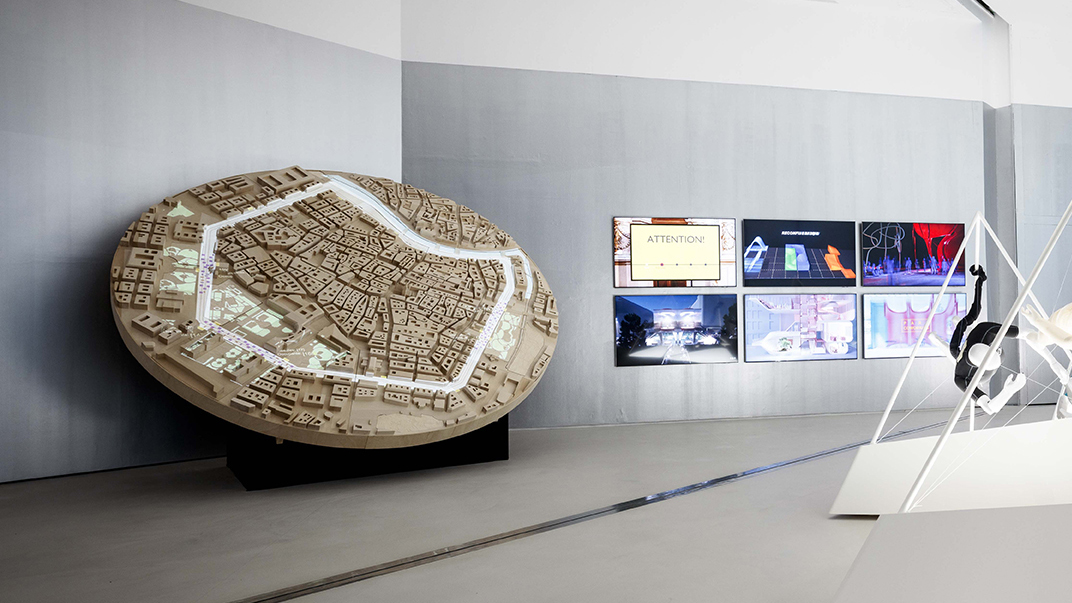 The project has been exhibited at Technoscape, The architecture of engineers, MAXXI, Rome.https://www.maxxi.art/en/events/technoscape-larchitettura-dellingegneria/
The project has been exhibited at Technoscape, The architecture of engineers, MAXXI, Rome.https://www.maxxi.art/en/events/technoscape-larchitettura-dellingegneria/
Teamwork Credits
Concept Design
Design and 3D Modeling of Modules
Scripting of KUKA KMP1500 Behavior in Unity
Storyboard & Animation
Physical Model Making
Stop-Motion Film Making
Design Tools
3D Modeling: Rhino, Blender
Robot Simulation: Unity
Rendering: Cycle(Blender)
Animation: Cycle(Blender)
Stop-Motion Film
Final Review
Urban Strategies
We focus on the 5 main cultural institutions located along the ring: the MAK, the museum of applied arts, the natural history museum and museum of art history, as well opera and BurgTheater.
On a masterplan level, mobility and pedestrianisation are being combined. We treat the Ringstreet as a running sushi table, where modular galleries and complementary museum programs travel along the Street via moving platforms on the existing tram tracks.
By adding to the existing transportation system, we get the opportunity to engage people with artworks, performing arts as well as complementary museum amenities while they are circulating through the city, creating a museum experience without having to sign up for it.
Architectural Program
We extract the interior experiences from 5 institutions. The Central Dome for Natural history, the gallery for ArtHistory, Central Atrium for MAK, Auditorium from Opera, and Grand stairs from BurgTheater. And other programs such as cafe, lecture room, shop and workshop for kids. Those programmatic modules are getting combined into a sequence of diverse spaces when put together and provide opportunity of collaborations between 5 cultural institutions, sharing their unique interior experiences to the street.to provide a preview for all 5 cultural institutions
There could be a performance tram, with modern dancing comparing with ballet, while you can also join the gallery to see the history of those performances; But also the possibility for a museum tram, filled with fossils, life sized stuffed animals, Rembrandt paintings and Erwin Wurm sculptures. Or a Tourism tram to provide a preview for all 5 institutions. These combinations create unusual curatorial possibilities where performances, objects and artworks that are otherwise not commonly brought together appear side by side.
Civic Experience
The preview of the institutions encourages people to get off their phones and join real life experiences. Each art tram provides a united but different interior experience of the respective cultural institution. We want to transform the ring into a cultural and artistic hub that is constantly moving and inviting the public to gather and interact.
It creates a new kind of contemplation and repose while connecting with the city. People can use the tram as transportation while they're on the way to work, or regard it as an extension of cultural experiences, when it docks on one of the cultural facilities.


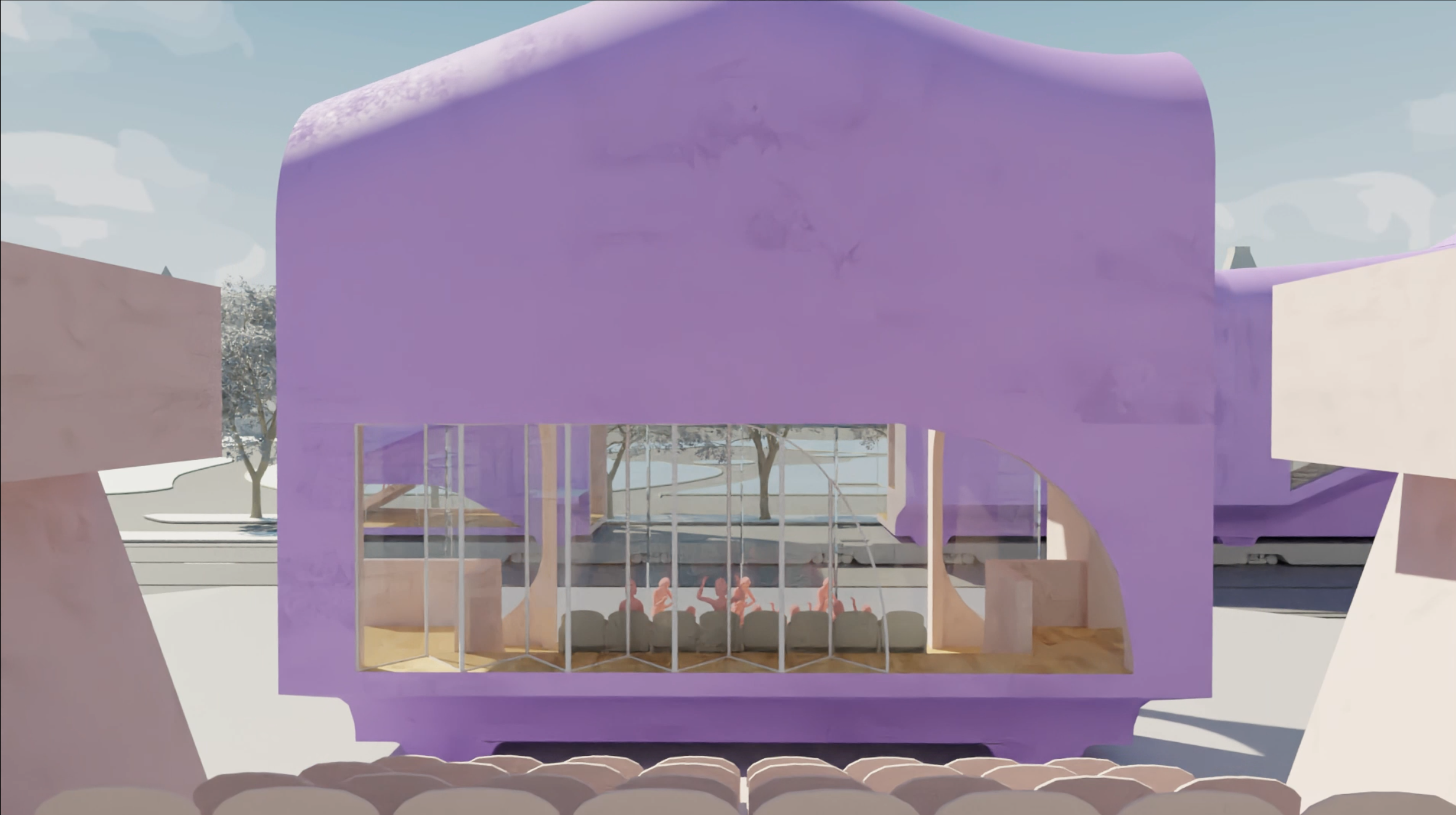

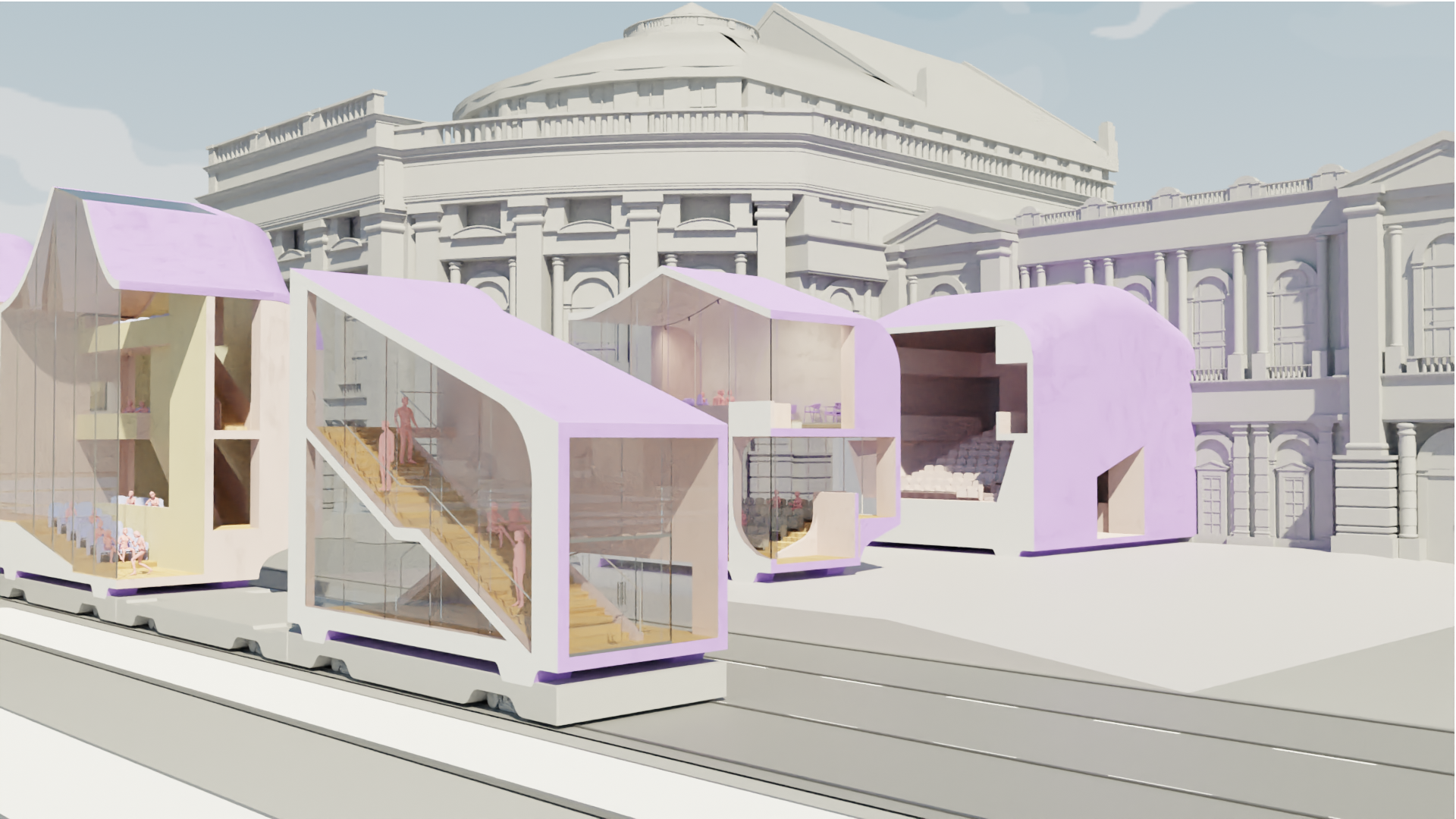

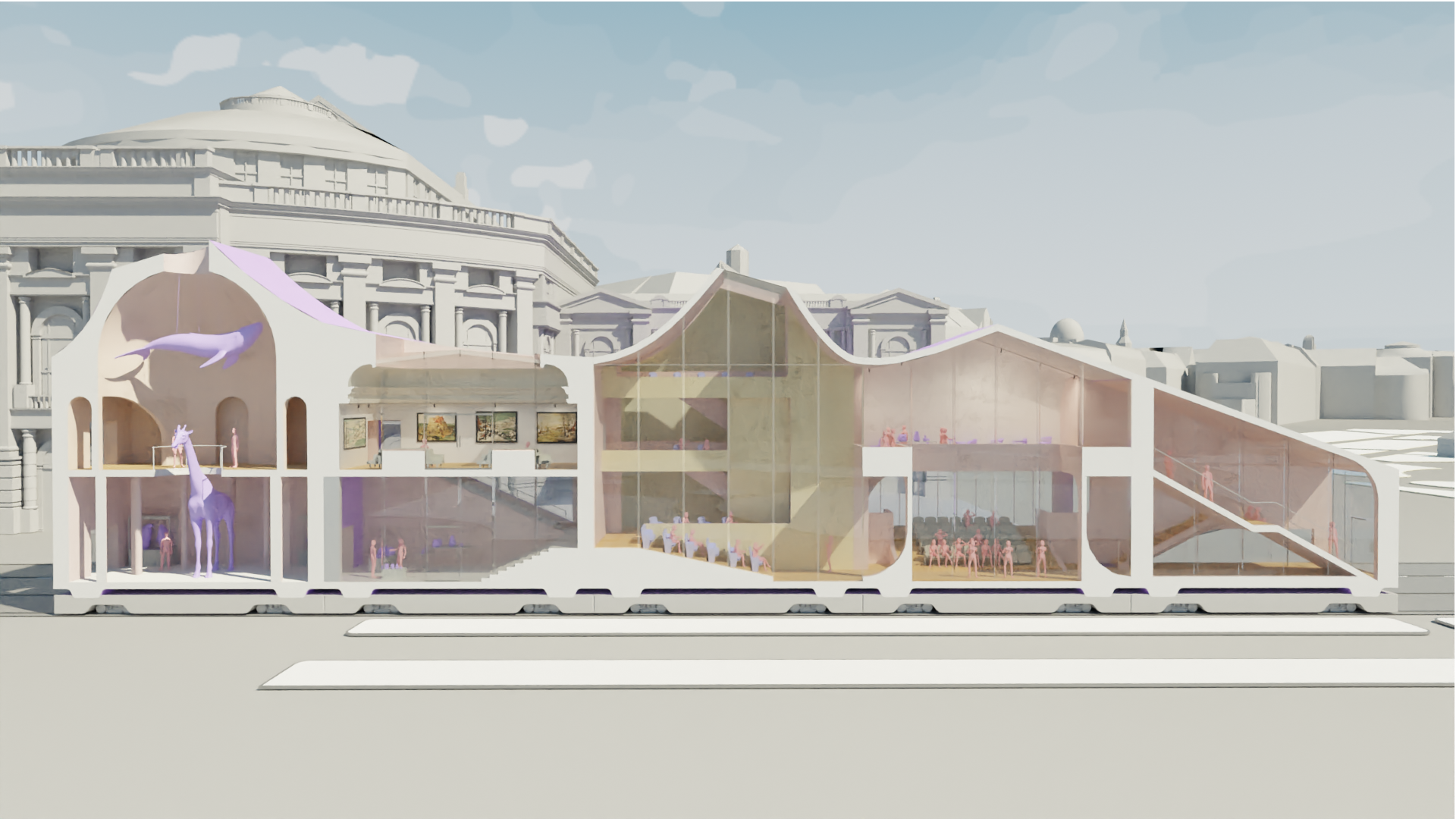
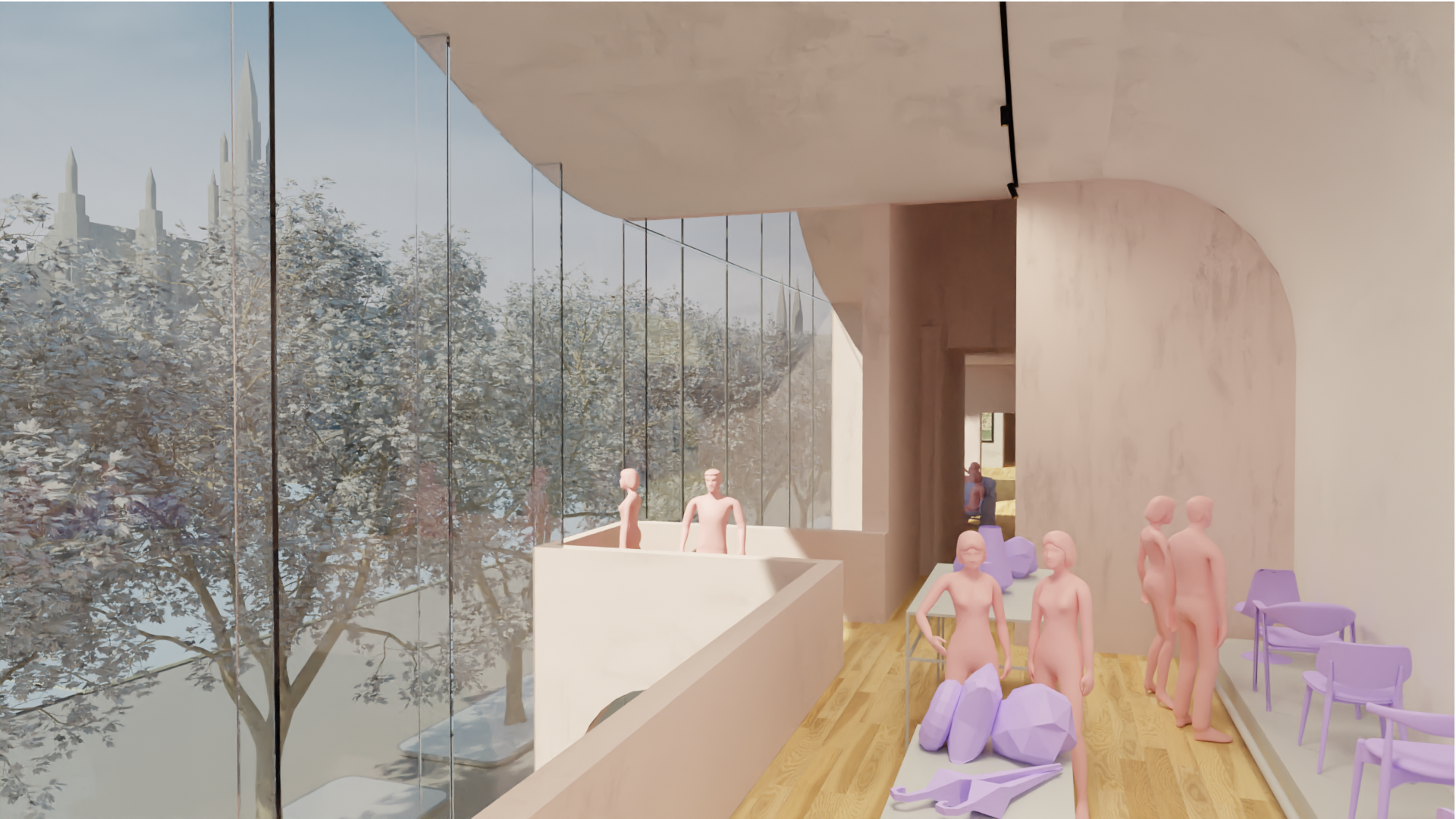
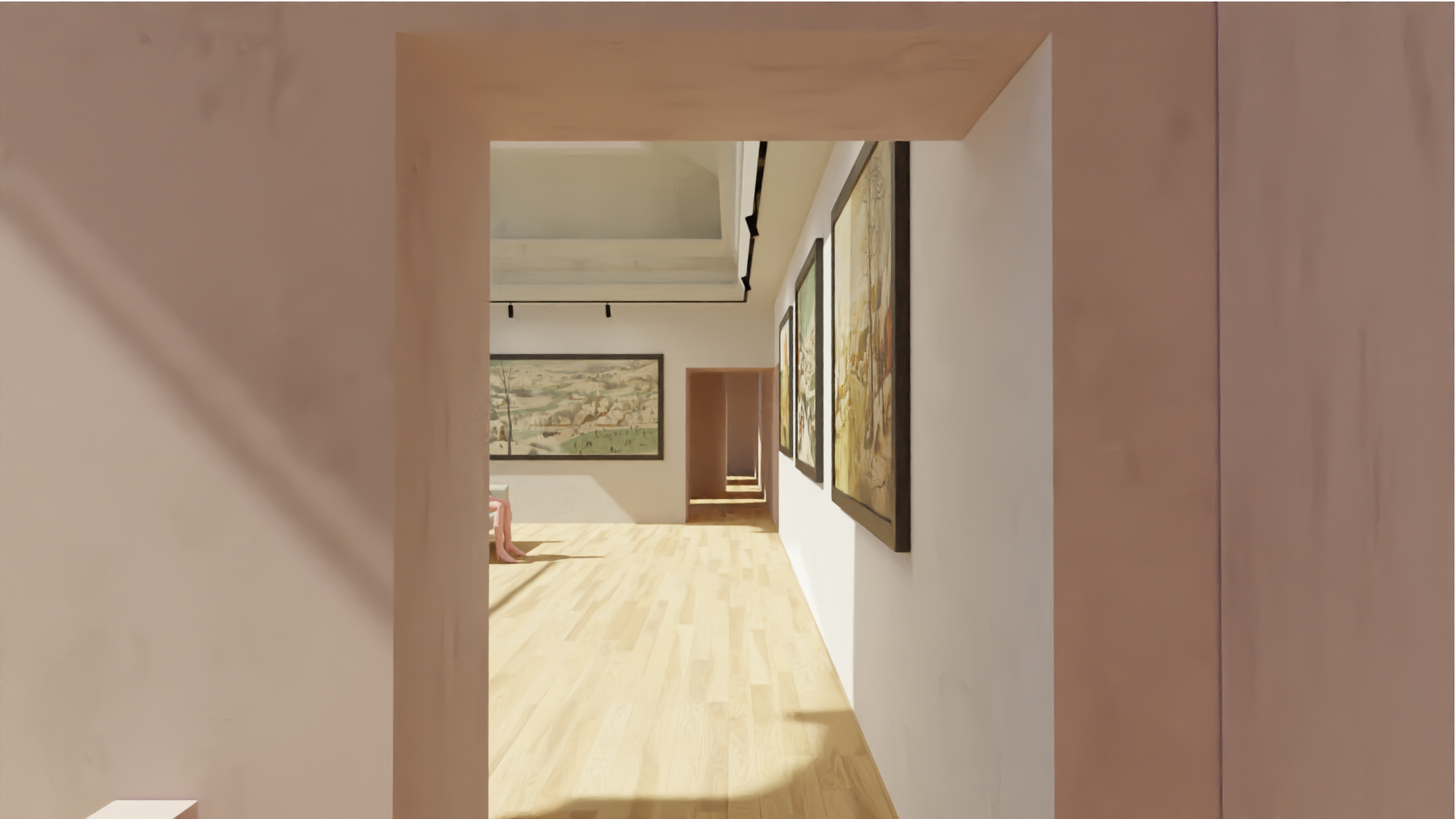


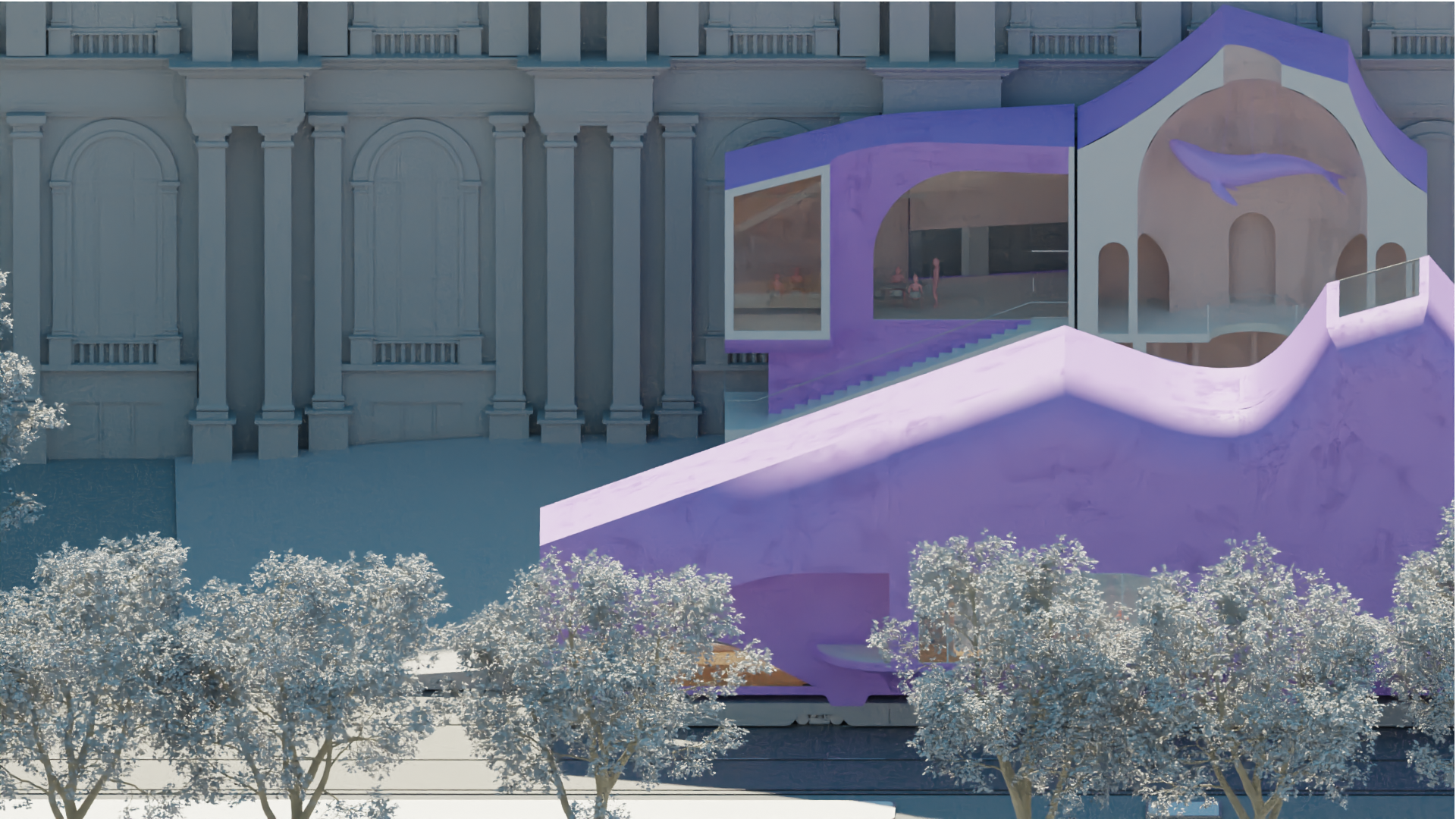
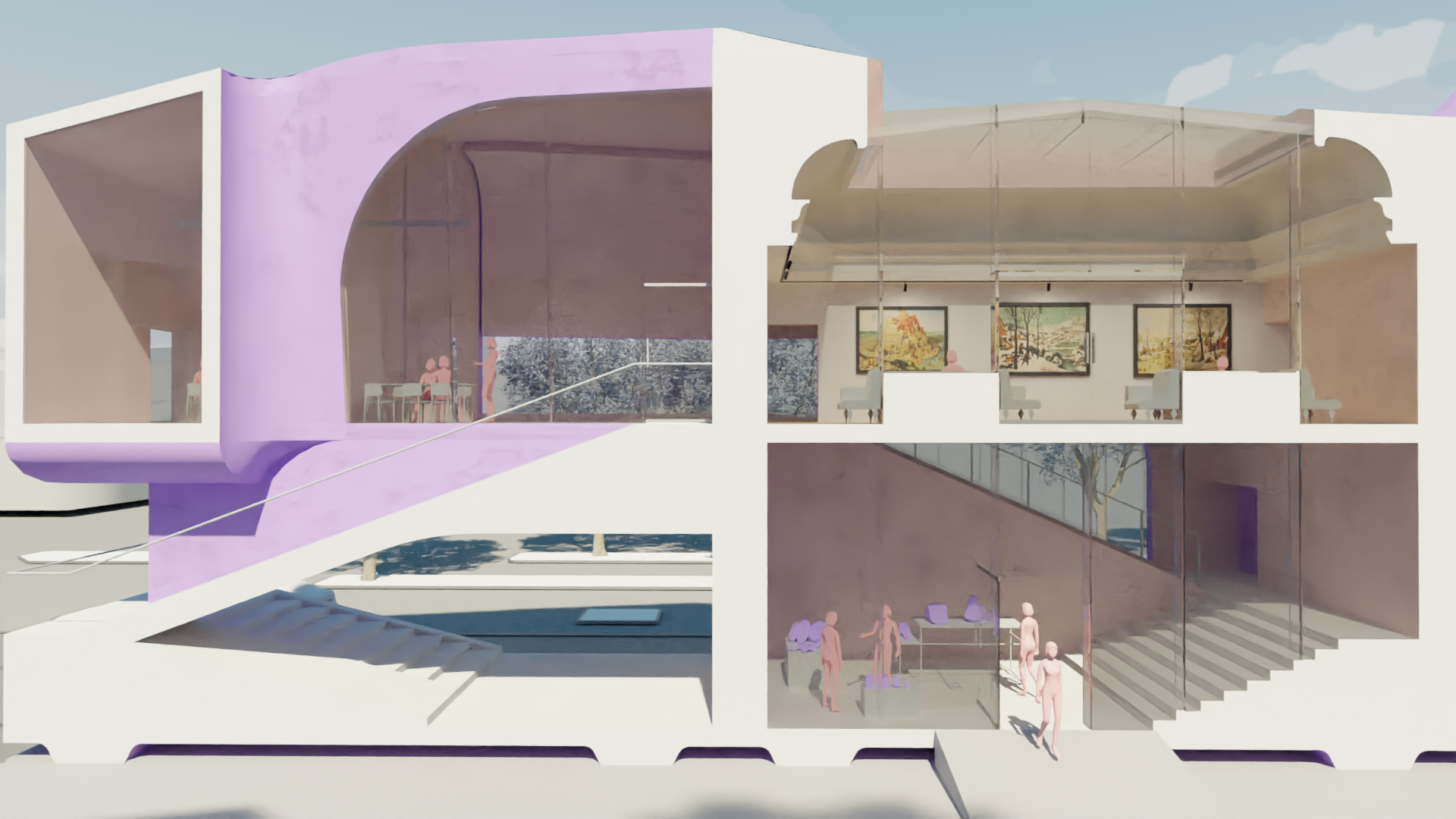
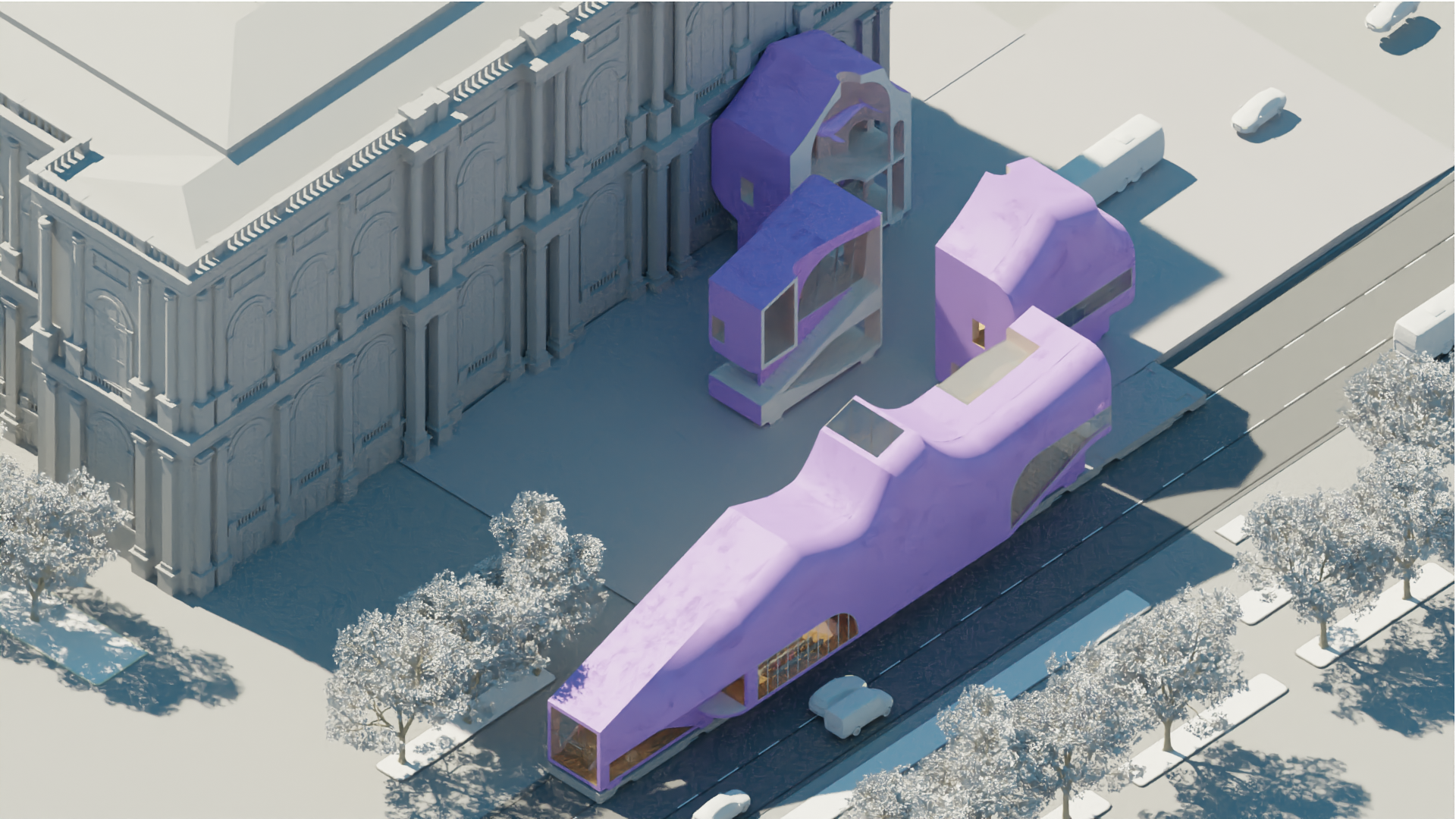
Physical Model for Stop-Motion


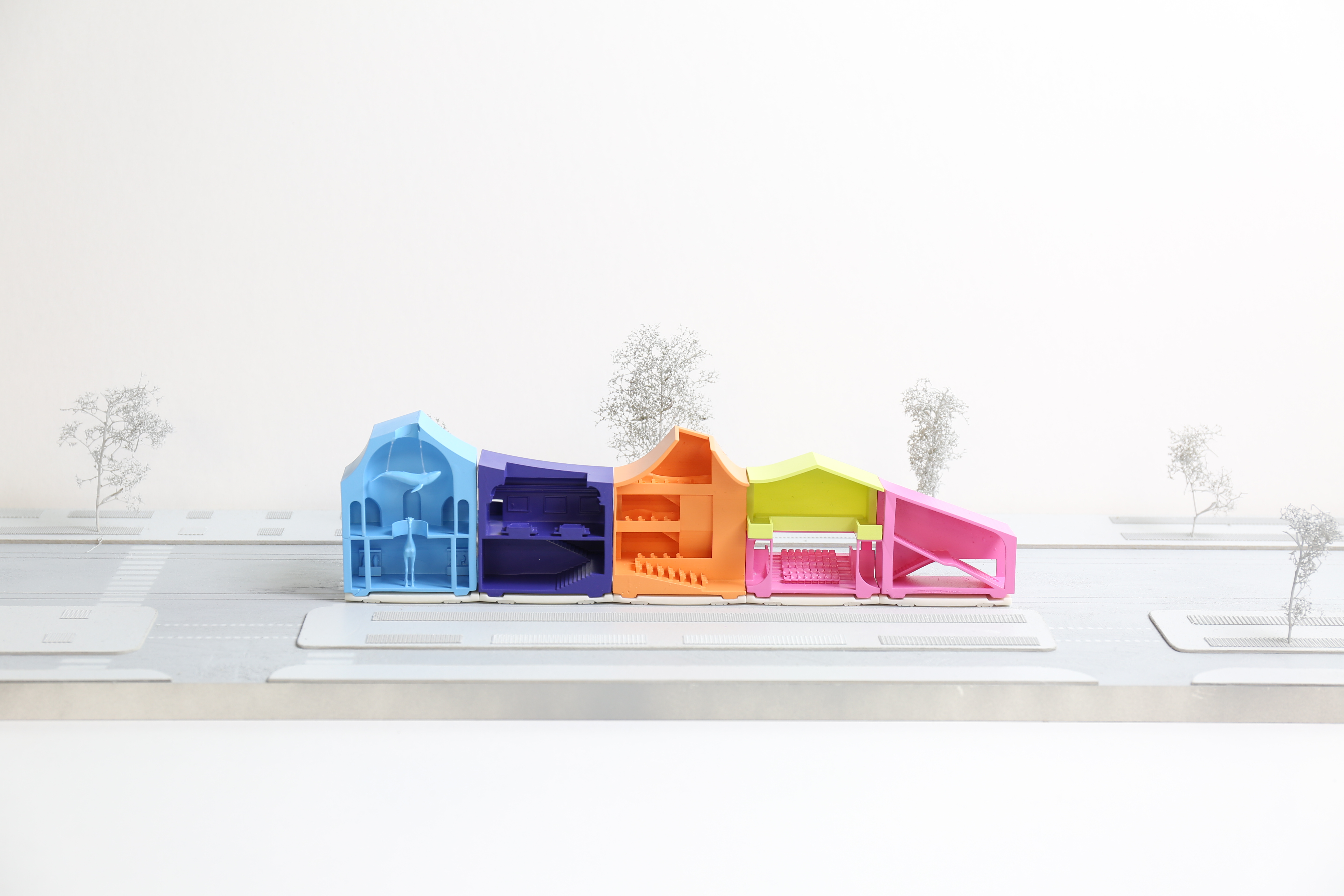

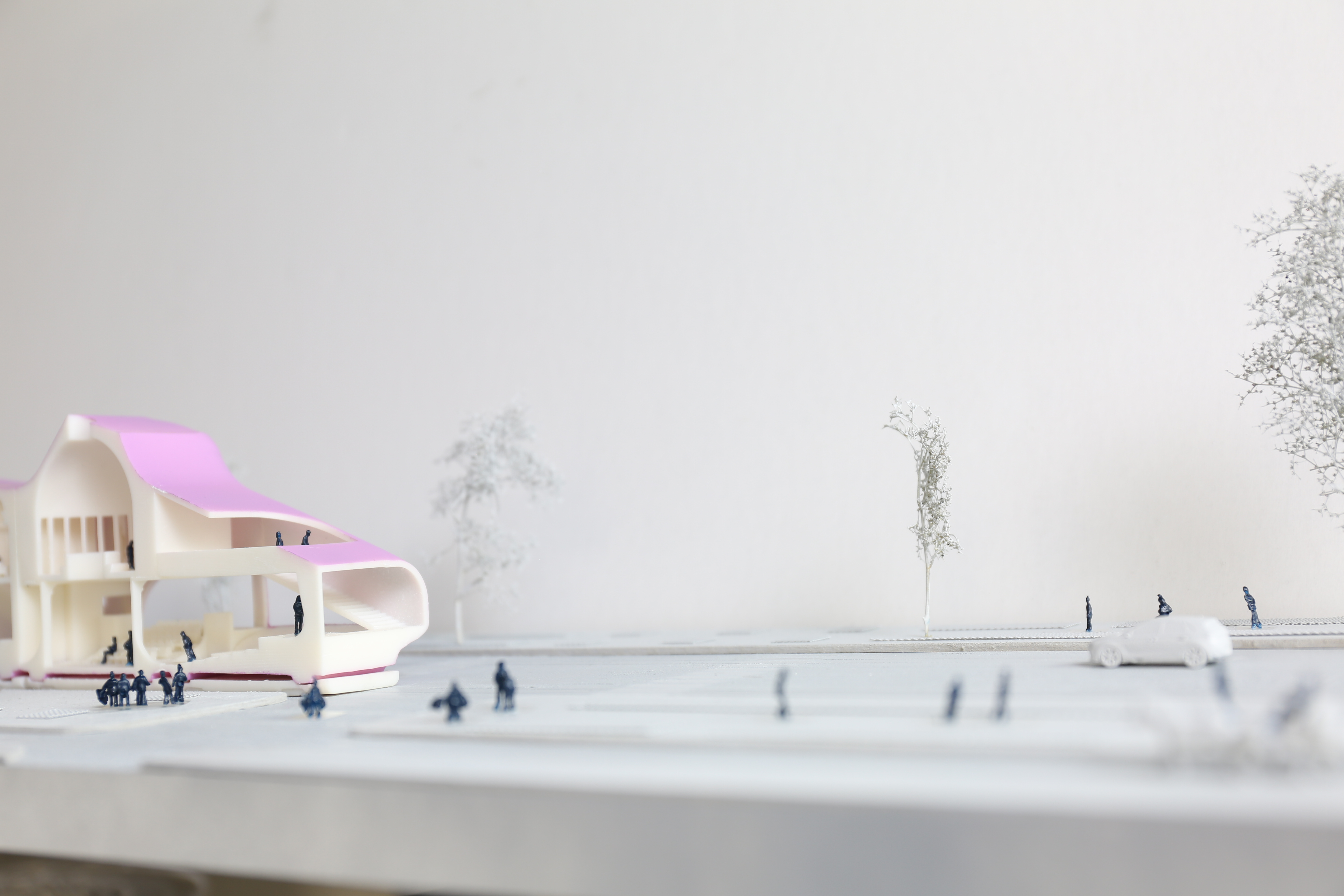



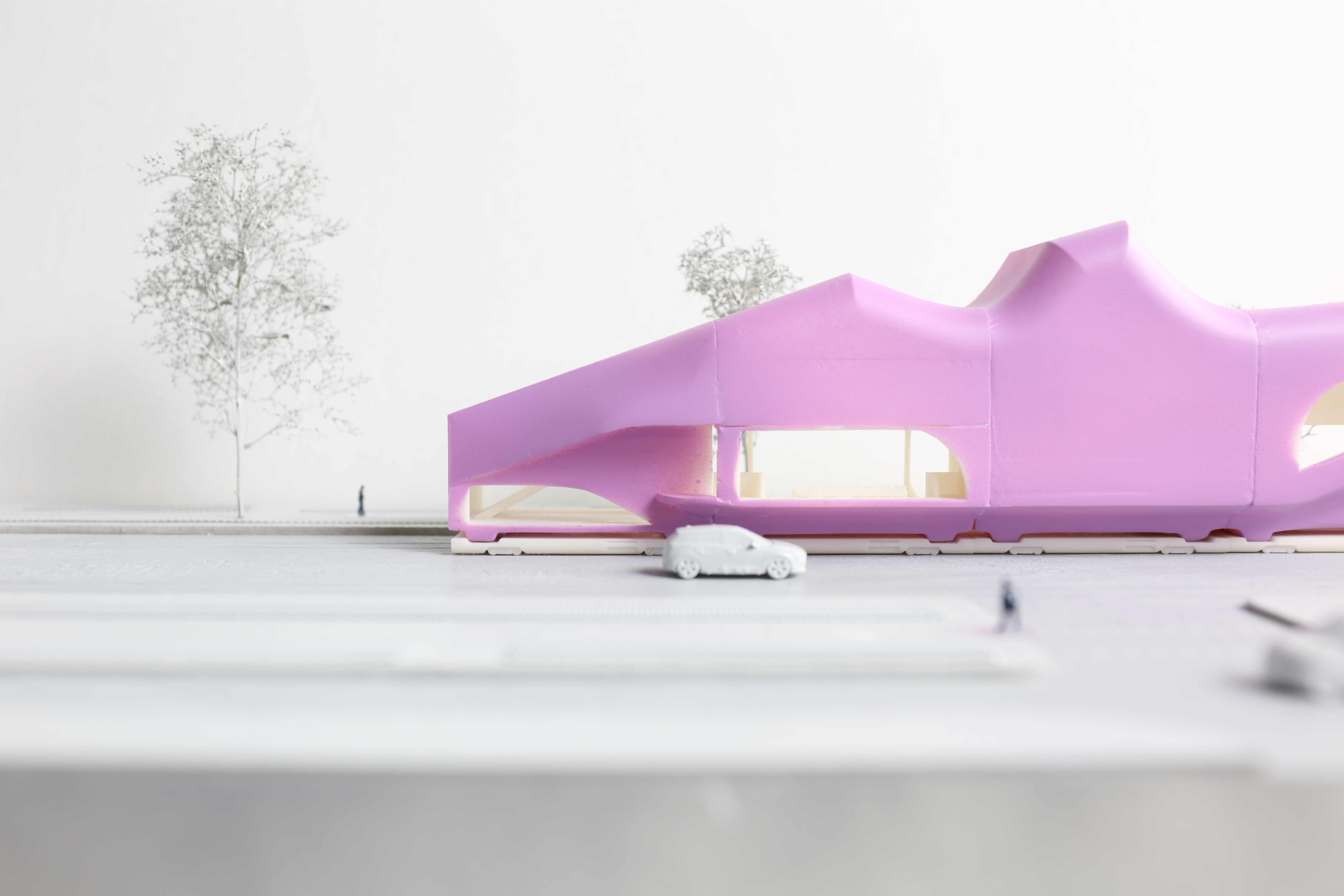
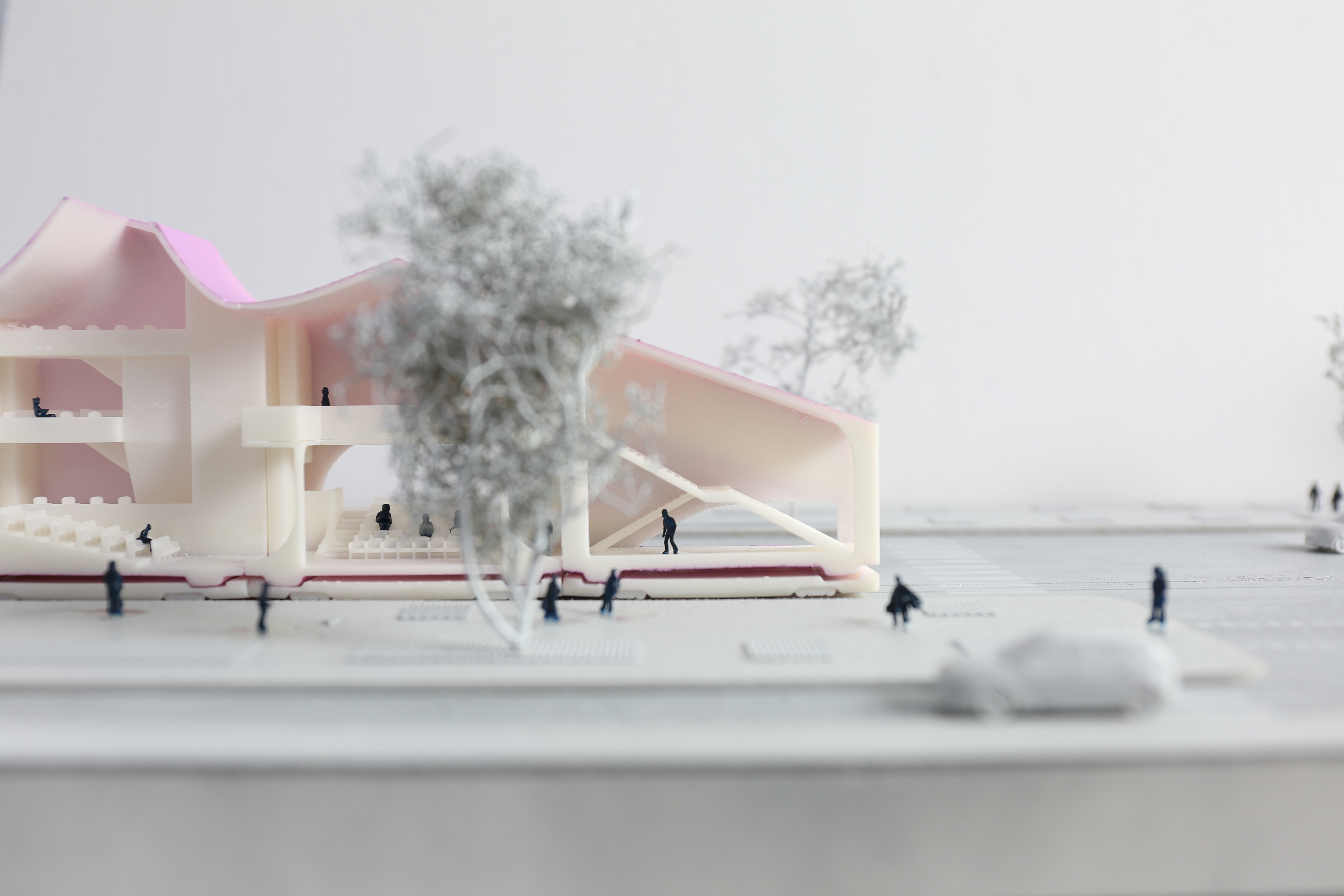
Reconfiguration
The dynamism we explore is 'moveable by machines'. Modules are being lifted by KUKA KMP robots and placed on platforms moving on the 19th century tram rails. At cultural anchor points “art trams” reconfigure, exchange programs and continue moving towards the next destination. When to modules unite at an anchorpoint the previously open sections become an completed interior space.
Detail and Joints
Each module has 2 kinds of joints - rigid joints that connect the modules on their open side to complete their sections using extending and interlocking mechanical joints when they are put together at the cultural anchor points. And soft joints that connect modules in their longitudinal way which allow for bending when the tram is moving.
All right received